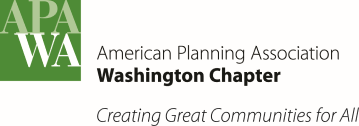- About Us
- Events & Training
- Professional Development
- Sponsorship
- Get Involved
- Resources
Update from the University of Washington MUP ProgramSamara Ressler – University of Washington Student Rep Update from the University of Washington MUP Program – the Winter quarter is off to a busy and exciting start as first year students continue with core requirements and second- and third-year students work on theses and professional projects in addition to course work. The University of Washington Master in Urban Planning (MUP) students started their winter quarter at the start of January. This is the third quarter online for second- and third-year students and the second online quarter for first-year students. While second- and third-year students are in the throes of their theses and professional projects, first-year MUPs continue with core classes including Comprehensive Planning, where students are working with the City of Sultan for their term project, and Studio Prep, where they are working with the City of Seattle – and will likely continue that partnership into the formal spring Studio courses. First-year students will all be deciding on their specializations in the coming months. Students continue to engage in a variety of programs, even with the limitations of COVID. First-year MUP student Colin Carter has been accepted to the Corbett Exchange Scholars Program run through the Canadian Studies Center at the UW. In a normal year, UW students would go to either the University of British Columbia or University of Victoria and Canadian students would come to UW for either a semester or full academic year to study their field. This year, given the virtual nature of the program, both American and Canadian students will attend workshops once a month to explore cross-border topics, aid in developing a virtual city tour of their respective towns, and work on a final project in their chosen area of study. The aim of the program is to raise awareness of the deep ties between the US and Canada, specifically in the shared Pacific Northwest region, and how students from each country can learn from the other’s practices. |

